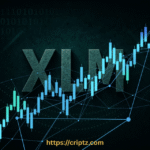The intersection of blockchain technology and real-world finance continues to evolve as Centrifuge, a leading protocol for tokenized assets, announced the launch of real-world asset (RWA) tokenization on Ethereum Virtual Machine (EVM) platforms. This strategic move is set to transform how traditional financial products interact with decentralized finance (DeFi), bridging the gap between conventional investment assets and blockchain-powered liquidity.
Centrifuge’s Push Into Real-World Asset Tokenization
Centrifuge has long been recognized as a pioneer in bringing real-world assets like invoices, real estate, and private credit into the DeFi ecosystem. With its new rollout on EVM-compatible platforms, the project aims to scale its reach significantly. The move will allow institutional investors, DeFi users, and asset originators to leverage blockchain technology in a more accessible and interoperable way.
Tokenization refers to the process of representing physical or financial assets as blockchain-based tokens, making them easier to trade, fractionalize, and integrate into DeFi protocols. By launching on the EVM ecosystem, Centrifuge ensures seamless compatibility with platforms like Ethereum, Polygon, and Avalanche, where the bulk of DeFi activity currently takes place.
Why Tokenized Real-World Assets Matter?
The significance of this development lies in its ability to unlock trillions of dollars worth of real-world value for blockchain-based applications. Real-world assets have historically been difficult to bring on-chain due to legal, compliance, and liquidity challenges. However, Centrifuge is building the infrastructure that makes these assets not only transferable but also programmable.
This means traditional financial instruments such as bonds, invoices, trade receivables, and property rights can now be tokenized, offering investors exposure to previously inaccessible markets. At the same time, asset originators can tap into DeFi liquidity pools to secure financing faster and with fewer intermediaries.
EVM Integration: A Key Milestone
The EVM ecosystem represents the backbone of DeFi, supporting thousands of decentralized applications (dApps). By launching tokenized RWAs on EVM platforms, Centrifuge is ensuring that its products integrate smoothly into existing DeFi ecosystems.
This will enable developers and protocols to easily plug into Centrifuge’s asset pools, using tokenized RWAs as collateral for lending, stablecoin minting, or structured financial products. The expansion will also make it easier for institutional investors, who are already experimenting with Ethereum-based solutions, to participate in the tokenization of real-world assets.
Institutional Adoption on the Horizon
One of the most significant aspects of this launch is its potential to attract institutional capital into DeFi. Banks, hedge funds, and private equity firms have been exploring tokenization as a way to increase liquidity and efficiency in traditional markets. With Centrifuge providing a secure and scalable infrastructure on EVM platforms, institutional players may find it easier to tokenize and trade their assets within blockchain environments.
The platform has already seen interest from credit providers and fintech startups that seek to leverage blockchain rails for faster settlements and more transparent lending. With RWAs now more accessible on EVM, the next wave of DeFi growth could come from institutional integration.
Regulatory Challenges and Opportunities
Despite the enthusiasm, regulatory hurdles remain a key consideration. Tokenizing real-world assets often involves navigating complex legal frameworks around ownership rights, compliance, and investor protections. Centrifuge has taken steps to ensure that its platform incorporates compliance layers, making it possible for regulated entities to interact with tokenized assets while adhering to local laws.
By setting high standards for compliance and governance, Centrifuge is positioning itself as a leader in the regulated DeFi (RegFi) space. This could play a crucial role in building long-term trust with regulators and financial institutions alike.
Impact on the Future of DeFi
The integration of real-world assets into DeFi through EVM platforms could mark a turning point for the industry. Up until now, most DeFi activity has revolved around crypto-native assets like Ethereum, stablecoins, and governance tokens. However, by introducing tokenized RWAs, Centrifuge is expanding the scope of what DeFi can achieve.
Investors will gain access to diversified yield opportunities, while borrowers and asset issuers will benefit from global liquidity pools not limited by traditional banking barriers. If successful, this could usher in a new era of hybrid finance (TradFi + DeFi), where blockchain and real-world assets coexist seamlessly.
Centrifuge’s Broader Vision
The latest launch is part of Centrifuge’s broader mission to make every real-world asset programmable and accessible on-chain. The protocol has already been used to finance invoices and small business loans, proving its practical utility. By extending its capabilities to EVM-compatible platforms, Centrifuge is doubling down on its vision of making DeFi more inclusive and tied to real-world value.
The project’s focus on scalability, compliance, and interoperability suggests that it is preparing to be at the forefront of the next wave of DeFi adoption, one that goes beyond speculative trading and into tangible financial applications.
Conclusion
Centrifuge’s launch of tokenized real-world assets on EVM platforms is a landmark development for both DeFi and traditional finance. By bridging the gap between on-chain liquidity and off-chain assets, Centrifuge is paving the way for a more robust, diversified, and regulated financial ecosystem.
As DeFi matures, tokenized RWAs could emerge as the driving force that brings mainstream investors, institutions, and global markets into the blockchain era. With Centrifuge at the helm, the future of finance may be closer than ever to achieving full digital integration.
Jennifer Mistry is a seasoned crypto journalist and SEO-focused writer with over five years of experience covering blockchain, crypto, DeFi, and emerging technologies. She specializes in delivering impactful breaking news, sharp market analyses, detailed reports, and precise price predictions — all with speed and accuracy. With a background in computer science and software engineering, Jennifer has a unique talent for transforming complex technical concepts into clear, engaging content. Her SEO-driven approach ensures articles are both highly optimized and reader-focused. At criptz.com, she leverages these strengths to keep audiences informed, empowered, and ahead of the curve.
Why Trust CRIPTZ?
At criptz.com, we bring you up-to-the-minute cryptocurrency news and expert analysis in 2025. Our seasoned team delivers accurate coverage of market trends, blockchain breakthroughs, and emerging innovations, backed by strict editorial standards. With 24/7 reporting on price movements, regulations, and tech advancements, we empower traders and investors to navigate the fast-paced crypto world with confidence. Count on Criptz.com for trustworthy insights into digital assets.







